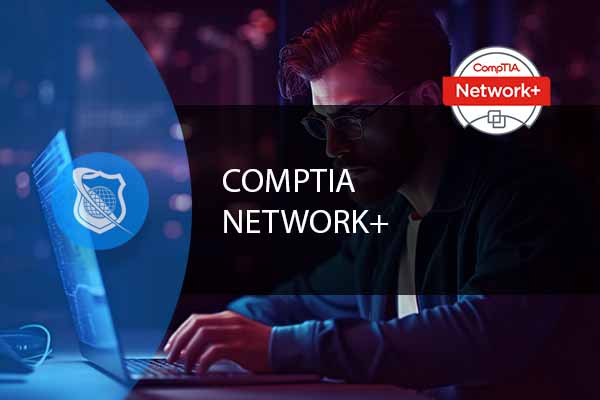In the dynamic and rapidly changing world of network engineering, OSPF (Open Shortest Path First) has emerged as a foundational technology, profoundly influencing how modern networks communicate and interact. As one of the most widely adopted link-state routing protocols, OSPF is renowned for its ability to ensure efficient, reliable, and seamless data transmission across both large-scale and intricate network architectures.
The significance of OSPF extends beyond mere data routing; it’s a complex system that requires in-depth understanding and mastery. Whether it’s configuring OSPF areas, establishing neighbor relationships, or troubleshooting common issues, the protocol offers a rich and multifaceted landscape for network professionals to explore.
For those aspiring to advance their careers in network engineering, particularly in roles that demand expertise in OSPF, preparing for ospf interview questions becomes not just beneficial but essential. These questions often delve into the core concepts, practical applications, and nuanced challenges associated with OSPF, reflecting the expectations and requirements of today’s competitive job market.
This article, meticulously crafted by a seasoned network engineering expert with over 20 years of hands-on experience in OSPF and related technologies, aims to equip you with the top questions and comprehensive answers you might encounter in your next interview. But beyond mere Q&A, it offers valuable insights into OSPF’s underlying functionality, its configuration best practices, and effective troubleshooting techniques. Whether you’re a novice seeking to grasp the basics or a seasoned professional looking to refresh your knowledge, this guide serves as a valuable resource, aligning with the real-world demands and complexities of OSPF.
Cisco CCNP Enterprise – ENCOR
Unlock your potential in enterprise networking with the Cisco CCNP 350-401 (ENCOR) online course. From network design to security and automation, master essential skills for the CCNP exam. Enroll now for flexible, hands-on training and elevate your career!
Understanding OSPF: A Brief Overview
Definition and Functionality of OSPF
OSPF, or Open Shortest Path First, is a link-state routing protocol used within an autonomous system. Unlike distance-vector protocols, OSPF routers exchange information about their link states, allowing for a more accurate and efficient routing process. By utilizing the Dijkstra algorithm, OSPF calculates the shortest path to each network, ensuring optimal data transmission.
How OSPF Differs from Other Routing Protocols
While OSPF shares similarities with other routing protocols like RIP and EIGRP, it stands out due to its scalability, speed, and flexibility. OSPF’s ability to divide a network into areas reduces the complexity of routing tables, making it suitable for large networks. Moreover, OSPF’s support for both IPv4 and IPv6 ensures its continued relevance in modern networking.
Common Applications and Use Cases
From enterprise networks to Internet Service Providers (ISPs), OSPF is widely used due to its robustness and adaptability. Its compatibility with various network topologies and vendor devices makes it a preferred choice for many organizations aiming for seamless connectivity and reduced latency.
Top 10 ospf interview questions and Answers
As you prepare for your networking interview, here are some essential ospf interview questions, ranging from basic to advanced levels. Understanding these questions will not only boost your confidence but also showcase your expertise in OSPF.
Basic OSPF Questions and Answers
- What is OSPF, and why is it used?
- OSPF is a dynamic routing protocol that calculates the shortest path to network destinations. It’s used to enable efficient routing within large and complex networks.
- How does OSPF differ from RIP?
- OSPF is a link-state protocol, while RIP is a distance-vector protocol. OSPF offers faster convergence, scalability, and support for larger networks compared to RIP.
- What are OSPF areas, and why are they important?
- OSPF areas are logical subdivisions of an OSPF network, reducing the size of routing tables and enhancing network stability. They play a vital role in optimizing routing processes.
Intermediate OSPF Questions and Answers
- How is OSPF’s cost metric calculated?
- OSPF’s cost metric is calculated based on the bandwidth of the link. The formula is
Cost = 10^8 / Bandwidth, allowing OSPF to choose the path with the lowest cost.
- What are OSPF neighbor relationships?
- OSPF neighbor relationships are established between routers to exchange routing information. These relationships are crucial for maintaining accurate and up-to-date routing tables.
- How does OSPF handle load balancing?
- OSPF can perform equal-cost load balancing across multiple paths with the same cost metric. This feature enhances network efficiency by distributing traffic evenly.
Advanced OSPF Questions and Answers
- What is OSPF route summarization, and why is it used?
- OSPF route summarization is the process of combining multiple routes into a single summary route. It simplifies routing tables, reduces network traffic, and improves stability.
- How does OSPF handle authentication?
- OSPF supports various authentication methods, including plain text and MD5. Authentication ensures that OSPF routers exchange information securely, preventing unauthorized access.
- What are virtual links in OSPF, and when are they used?
- Virtual links are logical connections used to connect OSPF areas to the backbone area (Area 0) when a physical connection is not available. They ensure proper routing between non-contiguous areas.
Lock In Our Lowest Price Ever For Only $16.99 Monthly Access
Your career in information technology last for years. Technology changes rapidly. An ITU Online IT Training subscription offers you flexible and affordable IT training. With our IT training at your fingertips, your career opportunities are never ending as you grow your skills.
Plus, start today and get 30 days for only $1.00 with no obligation. Cancel anytime.
Common OSPF Configuration Scenarios
In the world of OSPF, understanding the configuration scenarios is vital for both practical implementation and interview preparation. Here’s a closer look at some common OSPF configurations that you may encounter.
OSPF Area Configuration
OSPF areas are fundamental to the protocol’s scalability and efficiency. By dividing a network into smaller segments or areas, OSPF reduces routing overhead and enhances stability.
- Standard Areas: These are regular OSPF areas connected to the backbone area (Area 0) and contain all OSPF LSA types.
- Stub Areas: Designed to limit the routing information, stub areas don’t allow external LSAs, reducing the size of the routing table.
- Totally Stubby Areas: A more restricted version of stub areas, totally stubby areas only allow intra-area and default routes.
- Not-So-Stubby Areas (NSSA): NSSA areas allow for more flexibility by permitting external routes to be imported as type-7 LSAs.
OSPF Neighbor Relationships
Establishing and maintaining OSPF neighbor relationships is crucial for routing information exchange. Here’s how OSPF routers form neighborships:
- Down State: Initial state where no OSPF communication occurs.
- Init State: OSPF hello packets are sent, initiating communication.
- Two-Way State: Bidirectional communication is established.
- ExStart State: Routers negotiate to become master or slave.
- Exchange State: Database descriptors (DBDs) are exchanged.
- Loading State: LSAs are exchanged, and the OSPF database is synchronized.
- Full State: OSPF neighbor relationship is fully established.
OSPF Route Summarization
Route summarization in OSPF helps in reducing the size of routing tables and minimizing routing updates. It’s performed at area boundaries and allows for a more streamlined and efficient routing process.
Troubleshooting OSPF: Key Considerations
Troubleshooting OSPF can be a complex task, but understanding common issues and solutions is essential for both network management and interview preparation.
Common OSPF Errors and Solutions
- Neighborship Issues: Ensure correct network statements, area IDs, and hello/dead timers.
- Authentication Failures: Verify the authentication method and keys.
- Route Advertisement Problems: Check network types, area configurations, and summarization.
Tools and Techniques for OSPF Troubleshooting
- Show Commands: Utilize commands like
show ip ospf neighbor to inspect OSPF states.
- Debugging: Use OSPF debug commands to diagnose issues in real-time.
- Network Monitoring Tools: Employ tools like Wireshark to analyze OSPF packets.
Perpare for CompTIA Network+ Certification
Learn concrete vendor neutral Network fundamentals in our comprehensive CompTIA Network+ traning course.
Tips for Acing Your OSPF Interview
Preparing for ospf interview questions is more than memorizing answers; it’s about understanding the concepts and being able to apply them practically.
- Understand the Interviewer’s Perspective: Focus on what the interviewer is likely to ask based on the job role and responsibilities.
- Practical Tips for Preparation: Engage in hands-on labs, read official documentation, and participate in networking communities.
- Common Mistakes to Avoid: Don’t overcomplicate answers, be clear and concise, and admit when you don’t know something.
Conclusion
OSPF, or Open Shortest Path First, is more than just a routing protocol; it’s a vital technology that underpins modern networking. Its complexity, flexibility, and widespread adoption have made it a subject of interest for network professionals at all levels. Mastering ospf interview questions isn’t merely about passing an interview; it’s a reflection of your understanding of a technology that continues to shape the way networks operate.
This guide has sought to provide you with more than just a list of questions and answers. It has delved into the intricacies of OSPF, exploring its functionality, configuration scenarios, troubleshooting techniques, and practical applications. From basic concepts to advanced topics, the insights shared here are designed to equip you with a comprehensive understanding of OSPF.
But beyond theoretical knowledge, success in an OSPF-related interview requires dedication, practice, and a genuine passion for networking. It’s about connecting the dots between theory and practice, understanding how OSPF functions in real-world scenarios, and being able to articulate that understanding clearly and confidently.
The practical tips and insights shared in this article are not just tools for your next interview; they are building blocks for your ongoing career development. Whether you’re a novice seeking to enter the field or a seasoned professional aiming for higher roles, OSPF’s relevance and importance are likely to remain constant.
Remember, an interview is not just a test; it’s an opportunity to showcase your expertise, your approach to problem-solving, and your passion for networking. With the knowledge and preparation you’ve gained from this guide, you’ll be well-equipped to impress your interviewer and take the next significant step in your networking career.
In a field that continues to evolve, your journey with OSPF doesn’t end with an interview. Keep learning, stay curious, and embrace the challenges and opportunities that OSPF and network engineering offer. Your growth in this field is a continuous process, and mastering OSPF is a valuable milestone on a rewarding career path.
OSPF Interview Questions : Expert Answers to Ace Your Next Interview
What is OSPF and how does it work?
OSPF, or Open Shortest Path First, is a link-state routing protocol used in IP networks to determine the best path for data packets. It operates within a single autonomous system (AS) and utilizes the Dijkstra algorithm to compute the shortest path tree for each route. OSPF advertises link state information using flooding, allowing all routers within an OSPF area to have an identical view of the network topology. This ensures efficient and loop-free routing
Can you explain the different types of OSPF areas?
Yes, OSPF divides an Autonomous System (AS) into multiple areas to optimize network traffic and reduce the size of routing tables. The primary types include:
Backbone Area (Area 0): The core of an OSPF network, through which all other areas must connect.
Standard Area: A normal OSPF area that contains a mix of OSPF routers and networks.
Stub Area: Blocks external routes (from outside the AS) and uses a default route for destinations outside the area.
Not-So-Stubby Area (NSSA): Similar to a stub area but allows the injection of external routes from redistributed sources.
What are the OSPF LSA types, and what purpose do they serve?
Link State Advertisements (LSAs) are used by OSPF to exchange topology information. There are several types, including:
Type 1: Router LSA, describes the state of the router’s interfaces within an area.
Type 2: Network LSA, describes the routers on a particular multi-access network segment.
Type 3: Summary LSA, used for advertising routes between areas.
Type 4: ASBR-Summary LSA, describes routes to Autonomous System Boundary Routers.
Type 5: External LSA, advertises external network routes injected into OSPF from other routing protocols. Each LSA type plays a crucial role in the OSPF routing process, helping to build a comprehensive picture of network topology.
How does OSPF achieve load balancing?
OSPF can perform load balancing across equal-cost paths. When multiple paths to the same destination have identical costs, OSPF distributes traffic evenly among these paths. This is achieved without any additional configuration, as long as the routes are considered equal-cost by the OSPF cost metric. OSPF supports up to 16 equal-cost paths by default, a limit that can be adjusted.
What is the difference between OSPFv2 and OSPFv3?
The main difference between OSPFv2 and OSPFv3 is their support for IPv4 and IPv6, respectively. OSPFv2 is designed for IPv4 networks and cannot support IPv6 routing. OSPFv3, on the other hand, is an extension of OSPFv2 that supports IPv6 addressing while also introducing enhancements such as improved support for multiple instances on a single link and the ability to carry additional types of address families. This makes OSPFv3 more versatile and suitable for modern networking environments that utilize IPv6.














